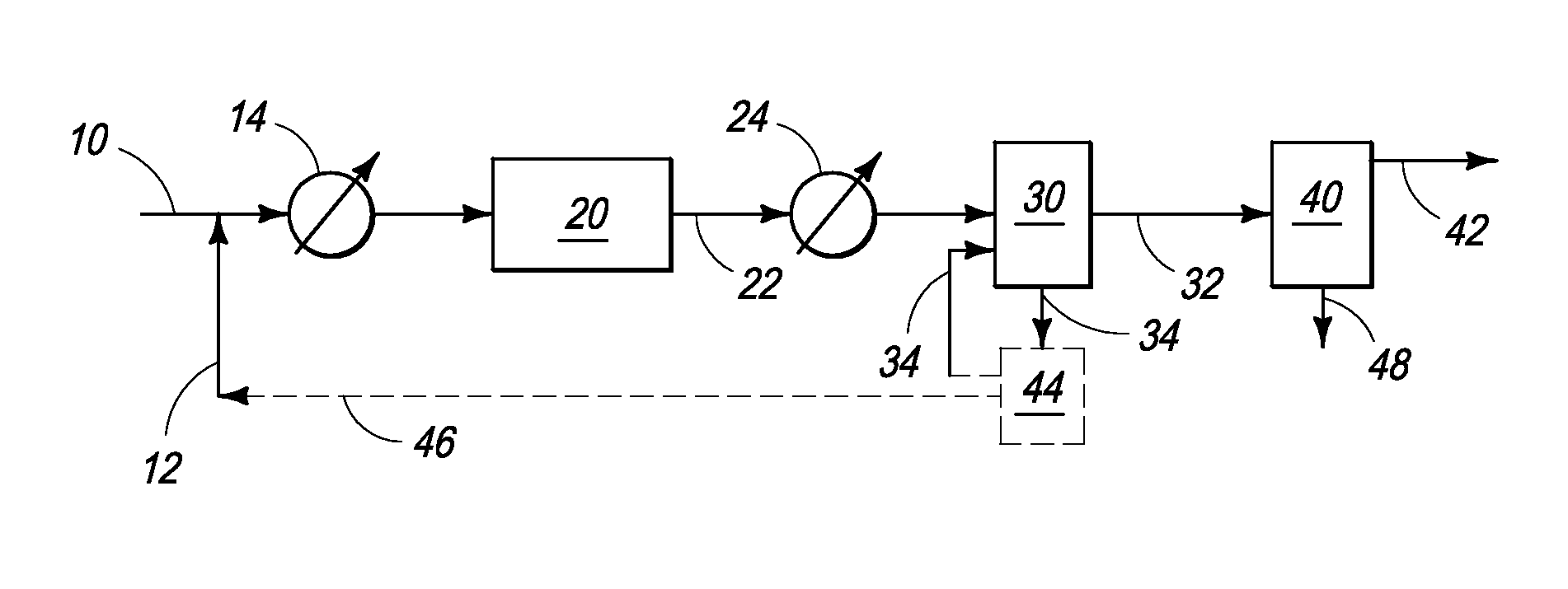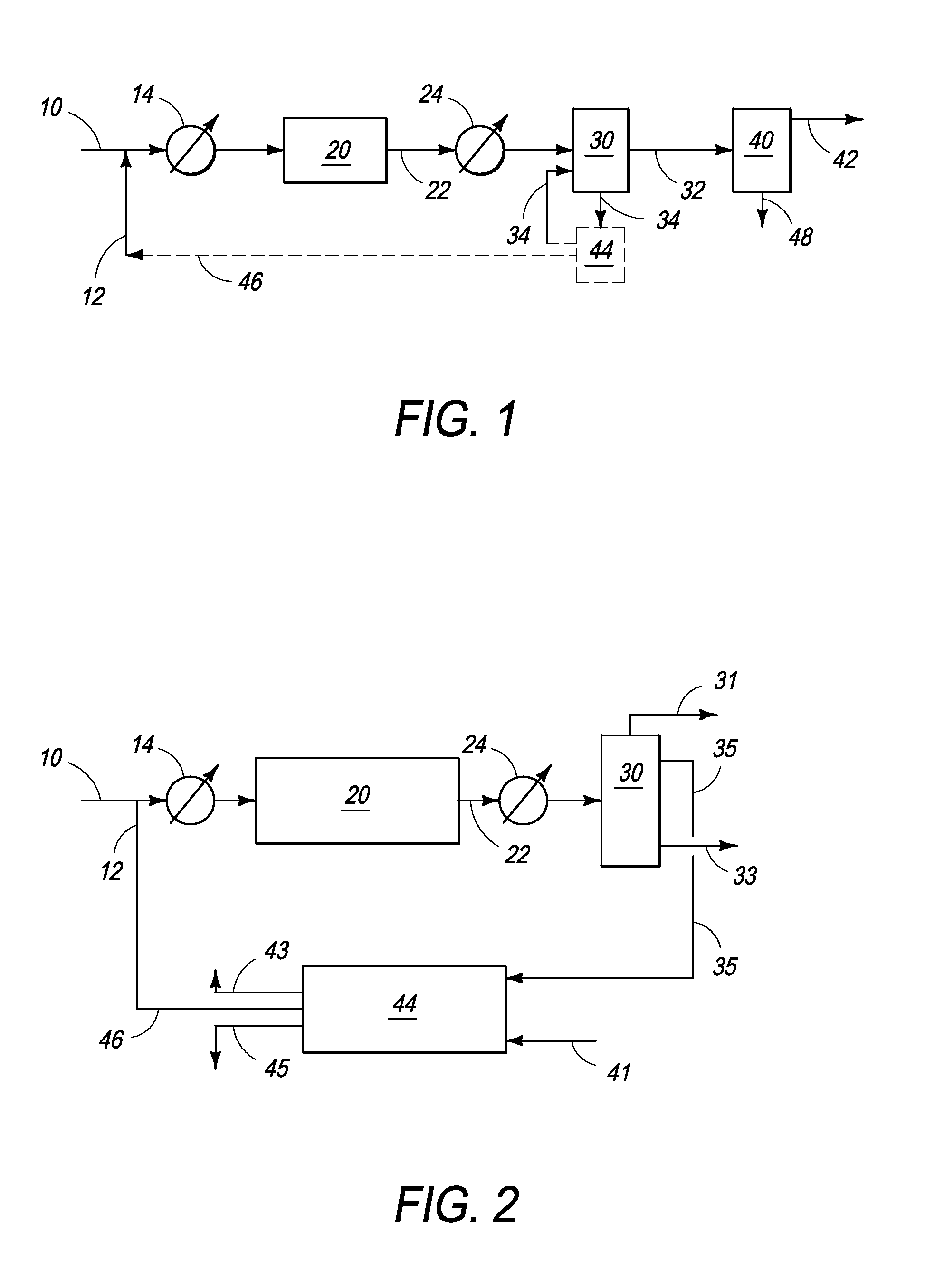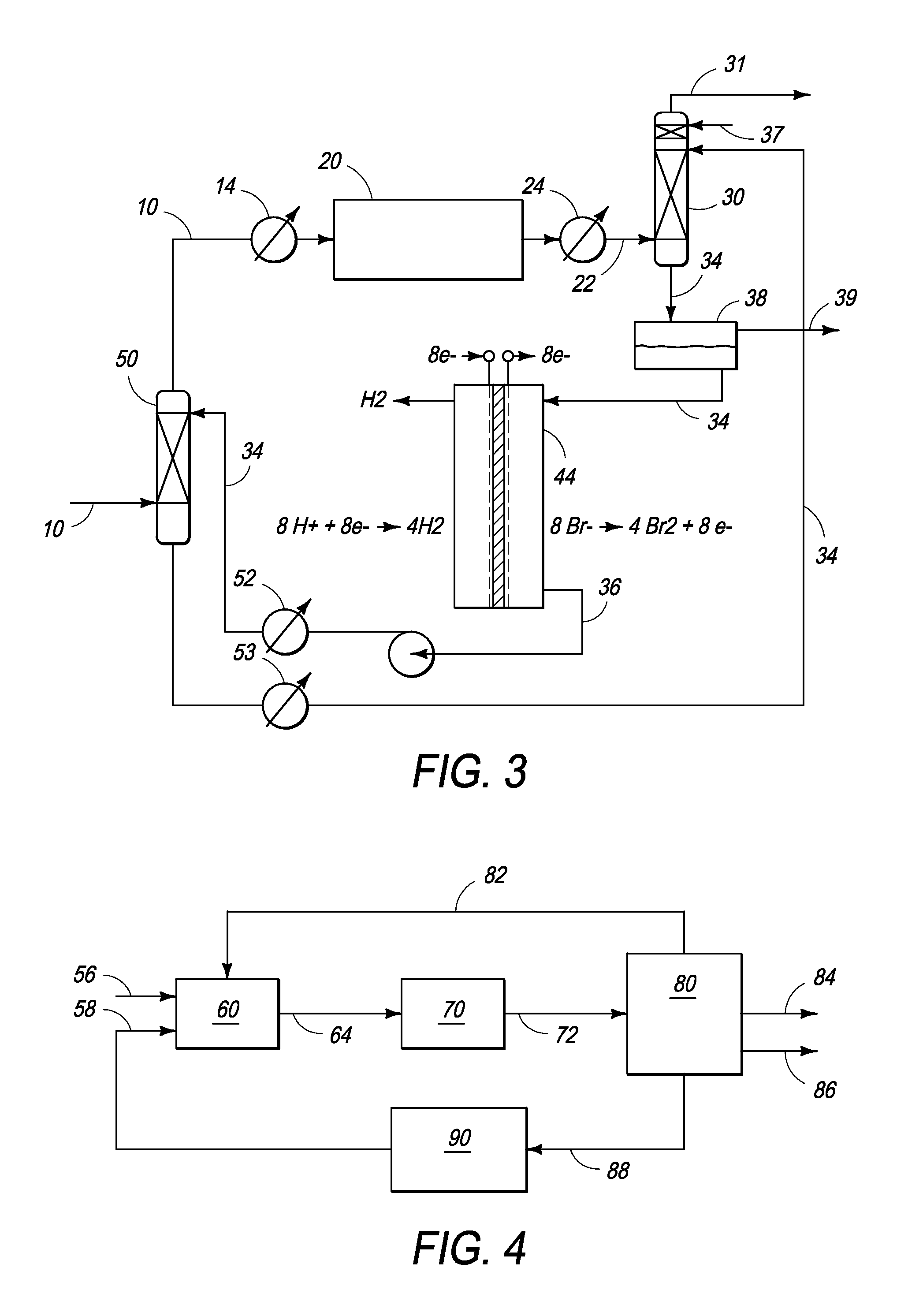Processes for converting hydrogen sulfide to carbon disulfide
a technology of carbon disulfide and hydrogen sulfide, which is applied in the preparation of halogenated hydrocarbons, carbon-sulfur compounds, bromine, etc., can solve the problems of low efficiency, low cost, and inability to meet the needs of a large number of customers,
- Summary
- Abstract
- Description
- Claims
- Application Information
AI Technical Summary
Benefits of technology
Problems solved by technology
Method used
Image
Examples
Embodiment Construction
[0014]Gas streams that may be used as a feed stock for the methods described herein typically contain lower molecular weight alkanes. As utilized throughout this description, the term “lower molecular weight alkanes” refers to methane, ethane, propane, butane, pentane or mixtures of two or more of these individual alkanes. The lower molecular weight alkanes may be from any suitable source, for example, any source of gas that provides lower molecular weight alkanes, whether naturally occurring or synthetically produced. Examples of sources of lower molecular weight alkanes for use in the processes of the present invention include, but are not limited to, natural gas, coal-bed methane, regasified liquefied natural gas, gas derived from gas hydrates and / or chlathrates, gas derived from anaerobic decomposition of organic matter or biomass, gas derived in the processing of tar sands, and synthetically produced natural gas or alkanes. Combinations of these may be suitable as well in some ...
PUM
| Property | Measurement | Unit |
|---|---|---|
| temperature | aaaaa | aaaaa |
| temperature | aaaaa | aaaaa |
| molecular weight | aaaaa | aaaaa |
Abstract
Description
Claims
Application Information
 Login to View More
Login to View More - R&D
- Intellectual Property
- Life Sciences
- Materials
- Tech Scout
- Unparalleled Data Quality
- Higher Quality Content
- 60% Fewer Hallucinations
Browse by: Latest US Patents, China's latest patents, Technical Efficacy Thesaurus, Application Domain, Technology Topic, Popular Technical Reports.
© 2025 PatSnap. All rights reserved.Legal|Privacy policy|Modern Slavery Act Transparency Statement|Sitemap|About US| Contact US: help@patsnap.com



